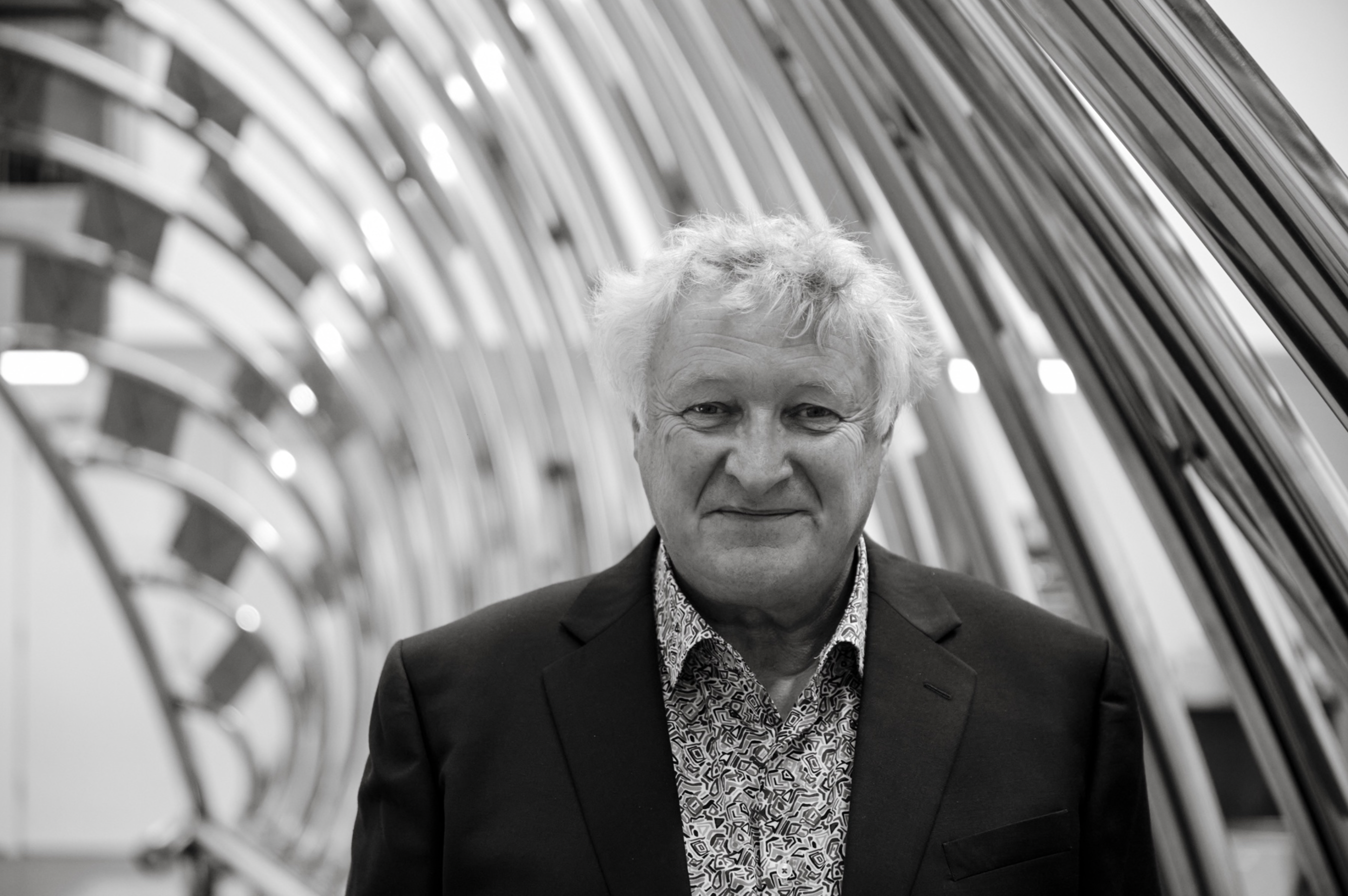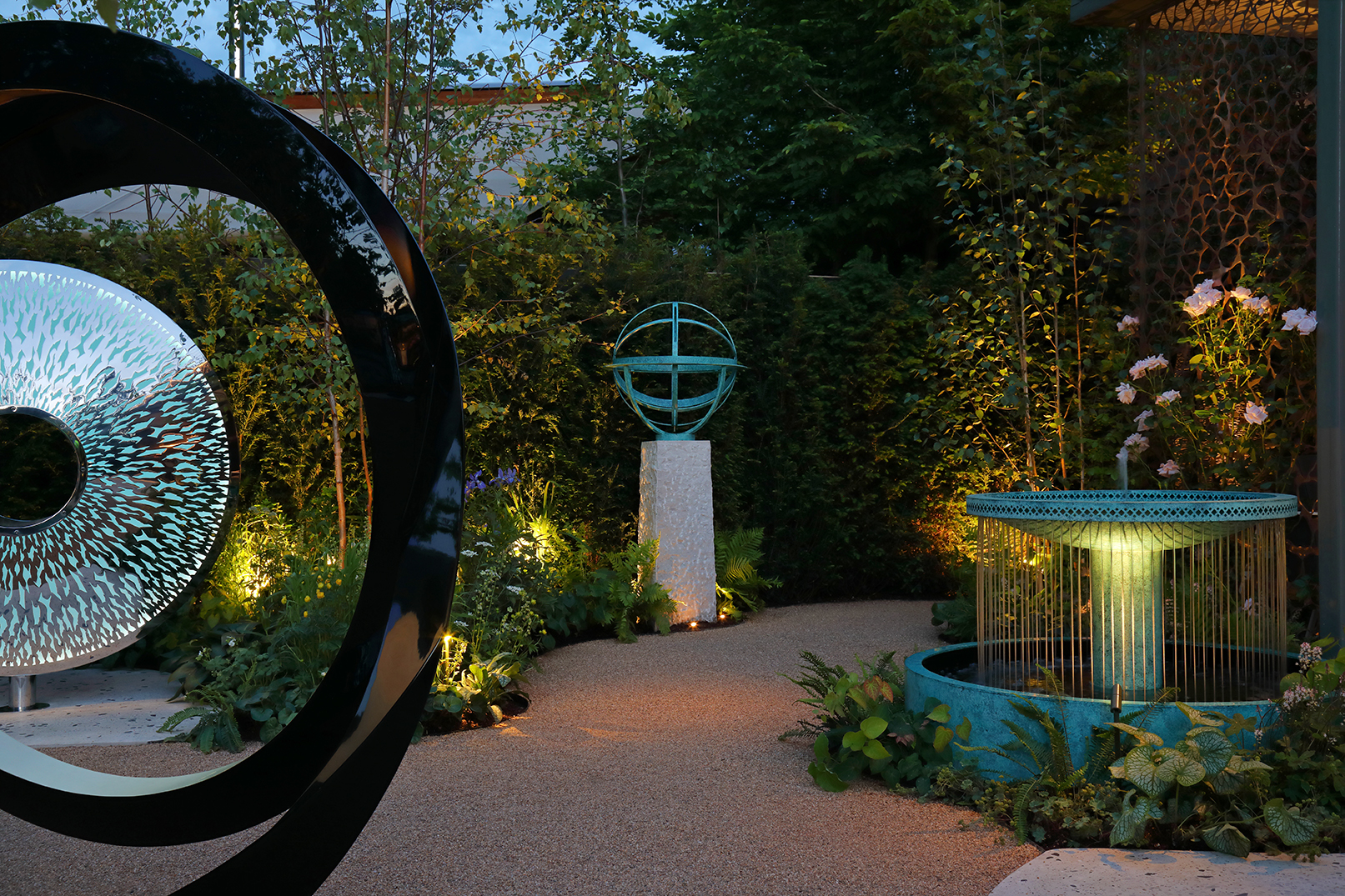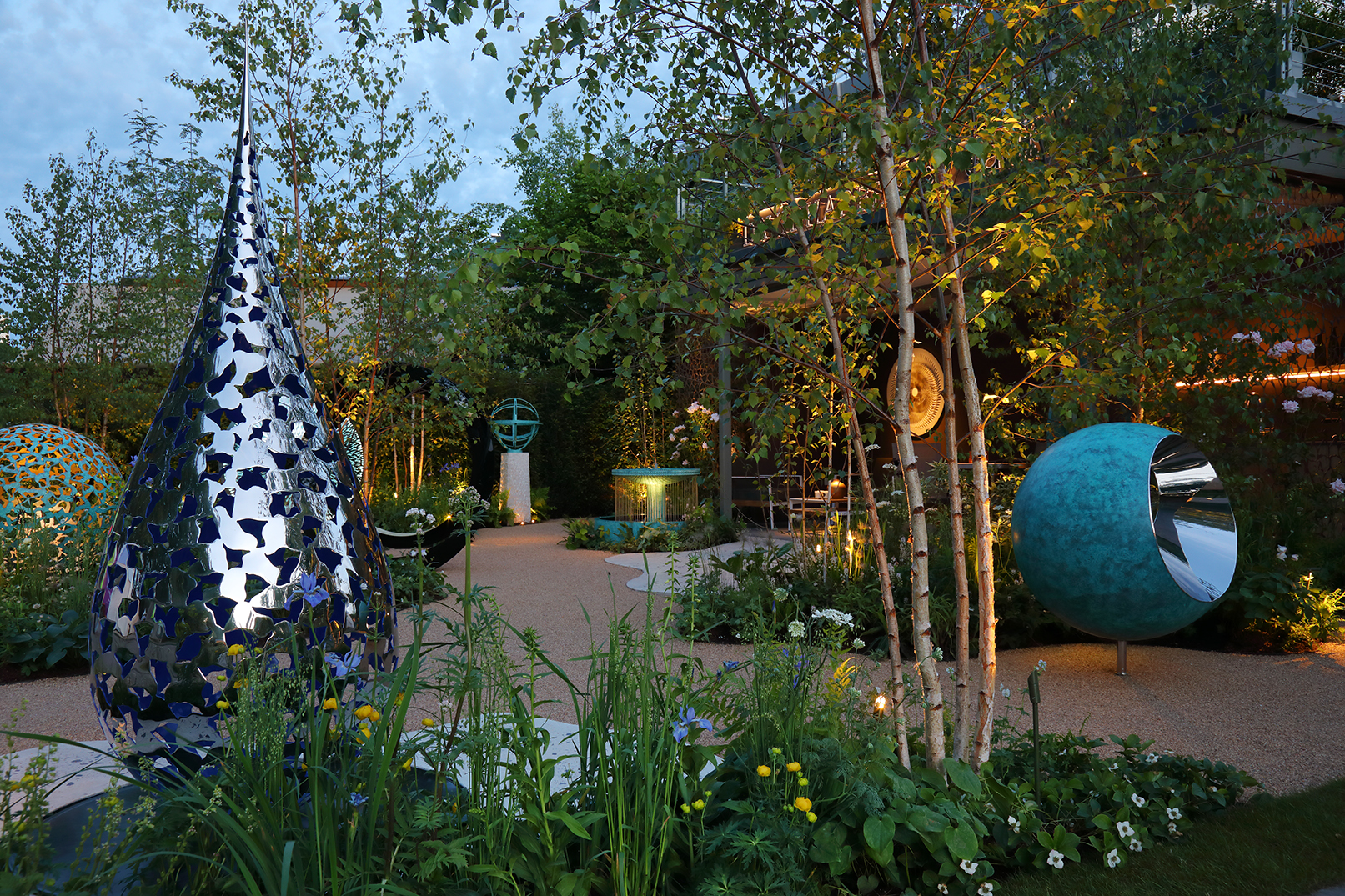Why do you think sundials are proving particularly popular?
Sundials are the embodiment of another sort of time. We are all rushed around with watches and phones, meetings and schedules. There is something very cathartic, reassuring and actually very beautiful about the passage of time, as read on a sundial.
Where is the most surprising setting of one your sculptures worldwide?
We do have sundials pretty all over the world over. We have one on the banks of the of the Nile, near Sudan, the cradle of humanity, and certainly their understanding of shadows and time was so elemental. It’s just rather lovely to think we’ve put something there which is working with their same constraints and is a universal piece.
How are you making your sculpture more sustainable?
We’ve been making sundials and sculptures now for 30 years and my daughters primarily have been a driving force in making sure that we are not abusing the environment in any way shape or form. We’ve stopped buying certain materials from certain parts of the world, we have actively sought out locally sourced equivalents, but the most important thing that I’ve always been incredibly proud of is that a sculpture or sundial correctly made will last for a thousand years. So one of my sundials will be carrying out its function in 2000 years’ time exactly as it is today
What is your favourite memory of the Chelsea Flower Show?
We’ve done Chelsea now for about 30 years and getting a stand here was a major achievement. The first trade stand we worked with the Inchbald School of Design and the Berkshire College of Agriculture - we are very proud to work with some brilliant students. We then progressed slowly from a modest stand at one side of the showground all the way through to the current position on Main Avenue.
How have water features evolved?
I recall marvelling at the technical feet of water pumping and many years ago when jets were first developed, it seemed to be all about flash and drama. I personally feel that now less is more. Allowing the water to be very minimal to have its own characteristics and to use surface tension, gravity and sound, to make the water an actual sculpture in its own right.
How do you approach working in a garden space?
While I’m devising a sculpture for a specific space, whether corporate or private, I always try to reference what is going on around it and what’s the intent of the person wanting to commission a piece. I am adamant that my pieces don’t have an ego, that they are there to enhance, embellish and subtly please what is already there.









